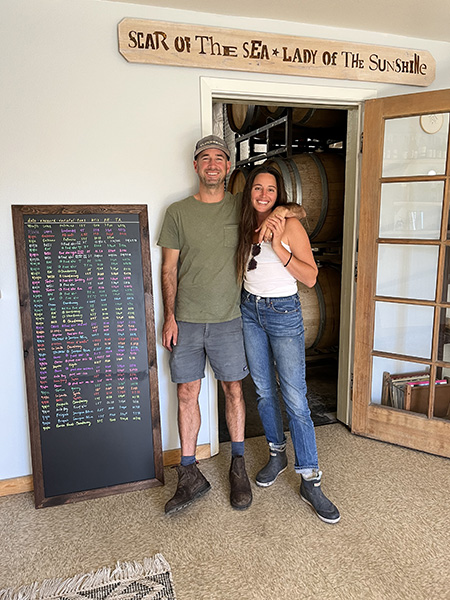During the harvest this September, I visited over 20 wineries in Santa Barbara County to taste new and upcoming releases from 2020 and 2021—two drastically different vintages in terms of the growing season and stylistic expression, yet with plenty of lovely wines to highlight from each. As the region expands and new wineries are built and purchased, lovers of this region have a plethora of new projects, cuvées and styles to explore.

2020 was a warmer vintage marked by record-breaking heat waves and wildfires—San Luis Obispo reached 120 degrees Fahrenheit and thousands of acres burned from August through October. The best wines offer one of two styles: lighter, fresher expressions from grapes harvested before the heat or riper, more concentrated expressions from grapes harvested afterward. Fortunately, the smoke that devastated the West Coast in 2020 spared much of Santa Barbara County, and I tasted very few smoke-affected wines. Top-performers include Liquid Farm, Paul Lato, Sandhi, Sanford, Bien Nacido, Brewer-Clifton, Chanin and Dragonette. Tyler winery crafted stunning releases from its brand-new Mae Estate Vineyard and released its first-ever sparkling wine, although the most exciting news here is the acquisition of the Fiddlestix vineyard in late 2021. Alma Rosa continues to rise in quality under the tutelage of Bosnian winemaker Samra Morris. Dragonette’s offerings of Sauvignon Blanc are some of the most impressive in the United States.



In San Luis Obispo, Mikey Giugni made beautiful wines from a gamut of grape varieties at Scar of the Sea, including new varietal Palomino and Alicante Bouschet bottlings. At Lady of the Sunshine, Mikey’s wife, Gina Giugni, has released some of the best iterations of her wine I have had to date—a striking achievement from exclusively organic and biodynamically farmed vineyards in this very cool vintage. The most surprising overperformer was the Scar of the Sea 2021 Rosé of Pinot Noir Methode Ancestrale pét-nat, a wildly drinkable example of this trendy yet finicky style where style can easily trump quality.

I was pleased with the performance of Rhône varieties during my trip to the Central Coast, beginning with an extended visit to Alban Vineyards near Edna Valley. John Alban was in the thick of harvest, monitoring macerations and pump-overs. His latest set of releases, mostly from the 2018 and 2019 vintages, were more impressive given the ingenuity I witnessed in the cellar, such as the use of homemade tools like the “Dunkelberger 2.0” to achieve his unique style.

A retrospective of the Rhône blend True Believer Reserve from Hammell Wine Alliance shone a spotlight on the potential for Syrah and Grenache in Santa Maria Valley—proprietor Chris Hammell trained at Sine Qua Non and has managed the farming at Bien Nacido Vineyard for over two decades.


Donnachadh (pronounced Don-nuh-kuh) is a new 40-acre vineyard in the Sta. Rita Hills that has winemakers buzzing. In 2013, Drew and Laurie Duncan planted Pinot Noir, Chardonnay, Syrah and Gamay on hillside blocks exposed to the ocean, plus better-protected blocks that sit next to the Santa Ynez River. They began crafting their own wines in 2016, and this report offers reviews of their 2019, 2020 and 2021 vintages. Most of the fruit at this stage, however, is still sold—Chanin and Tyler made compelling wines from this new property.

Visitors to Santa Barbara County can look forward to new experiences in Los Alamos, where Donnachadh and Terre et Sang each plan to open new tasting rooms. Manfred and Elaine Krankl have almost completed their new winery in Buellton—more about that here—and 2020 marked the first year that Sine Qua Non, The Third Twin and Next of Kyn were all made with estate fruit. New brands, styles and estates signal a maturing wine region, as I discussed with Pence Vineyards proprietor Blair Pence and winemaker Sashi Moorman while visiting the property in the Sta. Rita Hills. “The strongest wines here used to be négociant and not estate,” Moorman explained. “Sine Qua Non and others were buying grapes in the beginning, and that’s the case in a lot of young appellations. Then estates show their seniority with resources and time. Within the last five years, things have really started to change. Estates are now producing the best wines. We are finally in that chapter—it’s a clear indication of how Santa Barbara County is really transforming.”








